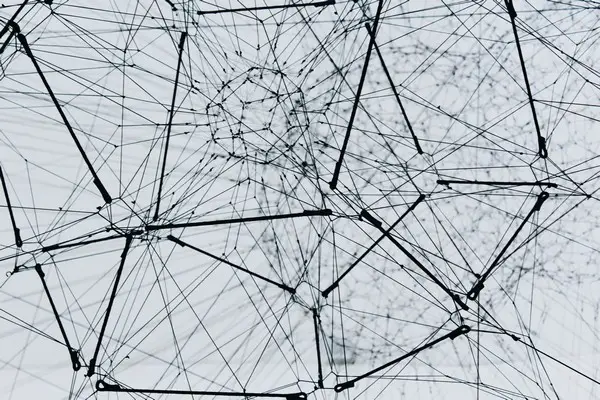Table of Contents
- Understanding Networks
- Key Concepts in Network Analysis
- Methodologies in Network Analysis
- Applications of Network Analysis in Sociology
- Conclusion
Network analysis is a powerful tool within the social sciences that allows researchers to investigate the structure of relationships between individuals, groups, organizations, or other entities. This approach goes beyond individual characteristics or isolated behaviors, focusing instead on the patterns of connections and interactions that exist in social systems. By mapping and analyzing these networks, sociologists can uncover insights into social capital, power dynamics, communication flows, and many other aspects of social life. This article will explore the basic principles of network analysis, key concepts, methodologies, and its applications in sociology.
Understanding Networks
A network, in the sociological context, refers to a set of nodes (also called actors or vertices) and the ties (also called links or edges) between them. These nodes can represent individuals, groups, or even larger entities like organizations or nations. The ties between the nodes can vary depending on the nature of the relationships being studied. They might represent friendship, communication, influence, financial transactions, or any other type of social connection. The basic idea of network analysis is that the structure of these relationships can significantly impact social behavior and outcomes.
Networks are often visualized as graphs, where each node is a point, and each tie is a line connecting two points. This graph-based approach allows researchers to identify key features of the network, such as the density of connections, the centrality of certain nodes, and the overall structure of the network (whether it is hierarchical, decentralized, etc.). These features help sociologists understand how social systems function and how individuals or groups are positioned within them.
Types of Networks
There are different types of networks based on the kinds of relationships they represent and their structural features.
- Ego Networks: These are networks centered around a single individual or entity (the “ego”), with all ties radiating outward from this central node. Ego networks are often used to study the personal relationships of an individual, including their family, friends, or professional connections.
- Complete Networks: In contrast to ego networks, complete networks map the relationships between all members of a group or community. These networks offer a holistic view of the social structure within that community, making it possible to study phenomena like group cohesion, factions, or the diffusion of information.
- Directed and Undirected Networks: Ties in a network can be directed or undirected. In a directed network, ties have a direction, meaning that one node influences another but not necessarily vice versa. For example, in a communication network, one person might send messages to another, but not receive any in return. In an undirected network, ties are reciprocal. Both nodes share an equal connection, such as a mutual friendship.
- Weighted Networks: Some networks assign weights to the ties between nodes, indicating the strength or frequency of the relationship. A weighted network might show that certain individuals communicate more frequently with each other, or that some financial transactions are larger than others.
Understanding the type of network being studied is crucial for interpreting the results of network analysis and for designing an appropriate methodological approach.
Key Concepts in Network Analysis
Several important concepts help sociologists interpret the patterns they observe in networks. These concepts help to explain how networks function and the roles that different nodes play within the network.
Centrality
Centrality is a measure of how important or influential a node is within a network. There are several ways to measure centrality, depending on the aspect of influence or importance being studied.
- Degree Centrality: This measures the number of direct connections a node has. In social terms, someone with a high degree centrality might be considered well-connected or popular, as they have many relationships with others in the network.
- Betweenness Centrality: This metric focuses on how often a node lies on the shortest path between other nodes. A person with high betweenness centrality might act as a broker or gatekeeper, controlling the flow of information or resources within the network.
- Closeness Centrality: This measure reflects how close a node is to all other nodes in the network. A node with high closeness centrality can quickly communicate or interact with all others, making them potentially powerful in terms of disseminating information or mobilizing action.
Clustering and Density
Clustering refers to the degree to which nodes in a network tend to form tightly-knit groups, or “clusters.” In a highly clustered network, small groups of nodes have many connections with each other but relatively few connections with other parts of the network. Clustering can indicate social cohesion within subgroups, but it may also signal the existence of silos or segregated communities.
Density, on the other hand, refers to the overall number of ties in a network compared to the total possible number of ties. A dense network has many connections between nodes, while a sparse network has relatively few. The density of a network can influence how quickly information spreads or how resilient the network is to disruptions.
Network Homophily
Network homophily refers to the tendency of individuals to form ties with others who are similar to them in some way. This similarity might be based on demographic factors like age, gender, or ethnicity, or on more subjective factors like interests, values, or social status. Homophily can lead to the formation of social groups that are internally homogeneous but distinct from other groups. While homophily can promote social bonding and trust, it can also contribute to social inequalities by limiting the flow of resources or opportunities across different social groups.
Social Capital
Social capital is a concept closely related to network analysis. It refers to the resources and benefits individuals can access through their social networks. These resources can include information, influence, emotional support, or material assistance. People with strong, diverse, and well-connected networks tend to have greater access to social capital, which can, in turn, lead to better social and economic outcomes. Network analysis can help sociologists measure and understand the distribution of social capital within a community or organization.
Methodologies in Network Analysis
Network analysis can be conducted using a variety of methodological approaches, depending on the research questions being asked and the type of data available.
Data Collection
Get the full article AD FREE. Join now for full access to all premium articles.
View Plans & Subscribe Already a member? Log in.





